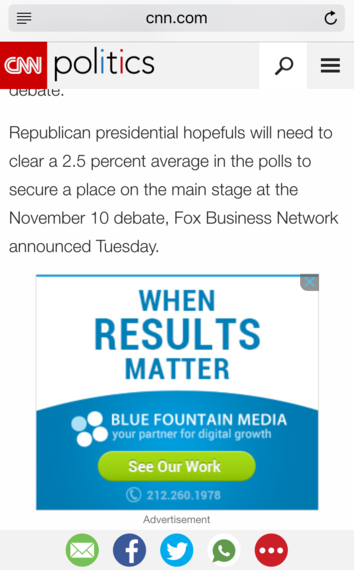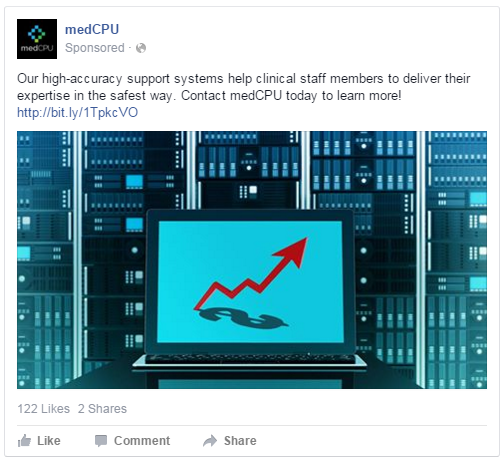The beginning of every year offers the chance for a fresh start and the opportunity to define how we would like the next 12 months to unfold. Aside from the personal resolutions that most of us have made and are doing our best to keep, a lot of businesses also use this time of year to identify new goals they would like to achieve throughout 2016.
What are some of the resolutions for your company in 2016? Is it to generate more leads? Increase your site traffic? Launch a major campaign? Sell additional services? Attract new customers? Encourage repeat visits to your site? Whatever the goals may be for your organization, the easy part is determining them--but it's figuring out the best way to accomplish them most effectively that is typically the difficult part. That being said, how exactly do you decide the correct approach to garner the results you're looking for?
When it comes to digital marketing and reaching your key performance indicators (KPIs), there's a massive amount of new channels as well as traditional yet efficient platforms to consider and select from. It's easy to get caught up with the "hot" trends you hear about or the specific initiatives your competitors are focused on, but at the end of the day, every brand has unique needs to fill, and thus it requires a unique marketing plan to fulfil them.
To be successful and prosperous in the new year, it's important that brands understand the need for a 360-degree marketing approach, also known as an omni-channel experience or a business plan that collaboratively uses different marketing elements to support one another and perform. While there is no defined way to make one vague projection for how all businesses should be allocating marketing resources in 2016, there are some general guidelines to keep in mind that will help you start the new year right. Below you'll find some suggestions that aren't particularly surprising, but as we begin our fresh start, it's not a bad idea to reinforce these thoughts once again.
You Need a Great Strategy
The first step of any excellent marketing plan is always a strategy. This period of research and planning is how you can gauge what's going to work best for your brand, and how to distribute your marketing budget. You shouldn't be jumping into something because you think it's probably the right channel, because your competitors are doing it, or because it's the most cost-effective option. A strategy outlines which channels will provide the highest return and generate the most impactful results based on your unique value.
You'll often hear percentages thrown around as to how much you should be spending on marketing. In reality, those numbers don't work for most brands because they lack a deeper understanding of their sales funnel. The simplest way to determine your marketing budget is to identify how much a sale is worth, or how much you're willing to spend for a qualified lead, and base it off of that.
Unfortunately, there are no shortcuts with marketing, and massive wins don't usually happen with a tight or unrealistic budget. Gone are the days of inexpensive PPC campaigns, or getting to page one on Google without much effort. It's important you have a strong and cohesive strategy outlined so that you can understand where to most wisely spend your marketing budget. Marketing done wrong is not just a waste of dollars, it is also wasted opportunities.
Encourage Repeat Visits
A significant portion of your marketing budget should be used for tactics that help to drive repeat visitors to your website. Users coming to your site once are far less likely to convert or make a purchase than a user who is familiar with your brand because they've been to your site a few times before. As consumers, we do our research before making a purchase. If we're looking for a running shoe for example, typically we'll visit a few sites to look at styles, brands, or prices, before making our final decision and clicking "buy now." As marketers, bringing visitors back to your site after they've visited once is essential to fostering a conversion, generating a lead, or making a sale. When you already have captured the interest of the user, you don't want to lose them.
Email marketing is one of the most effective approaches to generating repeat website traffic and staying top of mind with users that are slightly familiar with your brand. Provide an incentive for users to share their email address with you through a newsletter sign-up or with the promise of special discounts or promotions sent to their inbox. Tools like Constant Contact or MailChimp make it incredibly simple to produce and disseminate emails to large lists of recipients.
Encourage audiences to take a look at your products one more time, offer an exclusive discount for your services, or share a case study that shows how your company has helped improve other businesses with the product or service you're offering. Show your value through email, generate brand awareness, and ultimately drive users back to your website once again.
Retargeting advertisements are essential in terms of staying top of mind with your consumers and making sure that you're not losing any traction with your users as they consume content on other websites. Once a potential customer has visited your site, you're able to serve them with banner advertisements on other sites that they visit.
Best of all, with Google, the ads can be cost-per-click as opposed to cost-per-impression, making them very budget-friendly. Not only are retargeting ads critical in garnering repeat traffic, they can make a major difference in helping your brand resonate with users on a deeper level.
Persistence and Patience
Whatever channel you're focusing on, understand that in order to see results from it, you need to allow time. Making decisions based off findings from a few weeks' worth of campaign data won't be give you a clear picture of what is going on. Your budget must allow for each channel to take the necessary time it needs to start performing as you need it to. To exemplify the importance of time, consider a marketing tactic such as search engine optimization.
In the past, SEO was much simpler. To occupy page one of a search result (or even one of the first few spots), you needed a short period of time and to follow a few rules and best practices. Unfortunately, this is no longer the case. While SEO doesn't require actual dollars to secure a ranking, it does take a great deal of time and effort, which is a cost itself.
However, at the end of the day, the long-term results of proper SEO practices are indispensable. If you're trying to rank for a specific keyword, it could take months before you start seeing some changes in your search position, but once you do, you'll also see massive increases in your traffic, leads, sales, or any other metric you examine surrounding your online presence.
Paid and Organic Collaboration
Using paid and organic initiatives collaboratively is the ideal marketing mix. Simply focusing on paid digital advertising spots, or focusing on generating only organic website traffic won't work well, however using both paid and earned media in tandem will provide results that are much more significant and meaningful.
To highlight this, consider social media for example. Facebook, Twitter, LinkedIn, and Instagram are all great resources for reaching a specific audience and providing them with engaging content. However, while they are completely necessary, organic posts alone won't get you anywhere. You need to allocate some of your marketing budget towards promoted posts on the respective social media platforms you are active on in order to drive real brand awareness. That being said, you still need to create compelling social media posts on a regular basis, which requires resources, but you can't completely eliminate additional social spending or you won't produce results.
2016 Marketing Resolutions
For all marketers doing their best at starting their year off right and accomplishing their 2016 resolutions, a well-developed business plan with a reasonable budget, milestones, and trackable events is necessary. Take advantage of digital marketing and your ability to track all of your initiatives in real-time, measure them, and shift your resources as needed to help certain areas perform better.
You can't just jump into your marketing plans blindly and throw some money as you feel it is needed. Remember that at the end of the day persistence and patience is quintessential to any successful campaign. For more information on various marketing initiatives you can integrate into your business plan, visit our blog.



